Solar Mounting Systems PART 3 – Tilted Mounting
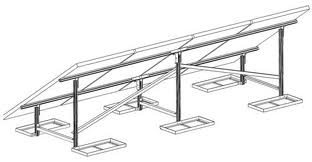 Crystalline solar PV panels produce the most power when they are pointed directly at the sun. In Australia, solar modules should face north for maximum electricity production. The orientation of the panels will often have a greater effect on annual energy production than the angle they are tilted at. The current feed-in tariff structures in Australia result in east-west-facing systems generating an optimal return on investment, especially if the property utilising solar feed-in tariffs has low electricity usage in the middle of the day.
Crystalline solar PV panels produce the most power when they are pointed directly at the sun. In Australia, solar modules should face north for maximum electricity production. The orientation of the panels will often have a greater effect on annual energy production than the angle they are tilted at. The current feed-in tariff structures in Australia result in east-west-facing systems generating an optimal return on investment, especially if the property utilising solar feed-in tariffs has low electricity usage in the middle of the day.
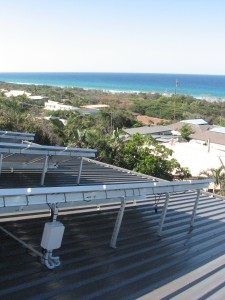 In some cases the roof that the panels are to be mounted on is flat and requires a tilt frame to point the panels directly at the sun. This means better generation as well as better cleaning of the panels when it rains.
In some cases the roof that the panels are to be mounted on is flat and requires a tilt frame to point the panels directly at the sun. This means better generation as well as better cleaning of the panels when it rains.
Tilt frames come in many forms and sizes. When tilting a solar panel you need to ensure that it is strong enough to handle the wind loads that the panels array, mounting structure and your roof are subjected to. A tilted system exposes a large surface area for wind to collide with. Be sure the installer is using an approved product and is installing it according to the manufacturers’ guidelines for your wind region.
As with flush mounted systems there is specific tilt leg spacing required on different roofs to ensure that the structure withstands the wind loads in the area.
Solar Mounting Systems PART 2 – Flush Mounting
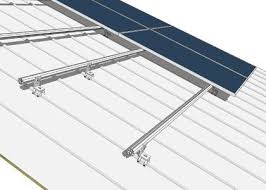 In part 1, we covered the general questions to ask about the solar mounting system before you have solar panels installed. In this part we will look at the most common installation method in the domestic market. (The flush mount method.)
In part 1, we covered the general questions to ask about the solar mounting system before you have solar panels installed. In this part we will look at the most common installation method in the domestic market. (The flush mount method.)
Most houses have a pitched roof and do not require a tilt frame to be installed. A flush mount system is cheaper to do because fewer materials are used and installation time is reduced because of this. Be sure to check the pitch of the roof and the orientation as well. In QLD a pitch of between 11 and 27 degrees is good This insures that the sun’s rays are hitting the panels at as close to a 90 degree angle as possible throughout the year.
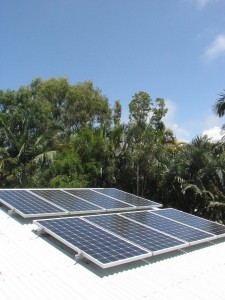 North facing roofs were a common option for installing solar panels on the generous 44c Feed in tariff because the panels were receiving sun throughout the day with optimum generation being received in the middle of the day.
North facing roofs were a common option for installing solar panels on the generous 44c Feed in tariff because the panels were receiving sun throughout the day with optimum generation being received in the middle of the day.
Now days it is more common and advisable to install on east and west facing roofs. Because the feed in tariff is so low the incentive to feed as much power back in to the grid has fallen away. Instead we look at using as much of our power during the day as possible while our solar panels are generating. On the average house our power peaks are in the morning before work and after school or late afternoon. By installing solar panels on east and west we ensure that the peak generations are as close to our peak usage as possible.
When the Solar mounting is installed the system should be installed so that the tin/colorbond roof is not compromised in any way. The L brackets that are fixed to the roof should have a rubber isolation pad that separates the aluminium from the roof. This helps prevent metal on metal corrosion as well as providing a watertight seal.
The mounting system should be installed with certain L foot spacing intervals. These L feet are screwed directly to your roof battens or purlins and the installer needs to ensure that he is using the right spacing for the batten material and the right screws for the application.
Tile roofs are different in installation because the brackets used are different. The tiles have to be lifted to expose the roof battens where the tile brackets are fixed to using the appropriate wood screws. Ensure that your installer grinds the tile out where the bracket will sit otherwise the tile will not sit flush and possibly allow water ingress.
In all cases as mentioned in Solar Mounting systems PART 1, it is important to choose a solar mounting system that is approved for installation in Australia and your area.
Ask your installer about their solar mounting system. Be sure that it is made from quality products and is approved for use in your area.
Part 3 of this article will focus on ‘tilted mounting systems.’
Solar Mounting Systems PART 1 – General Information
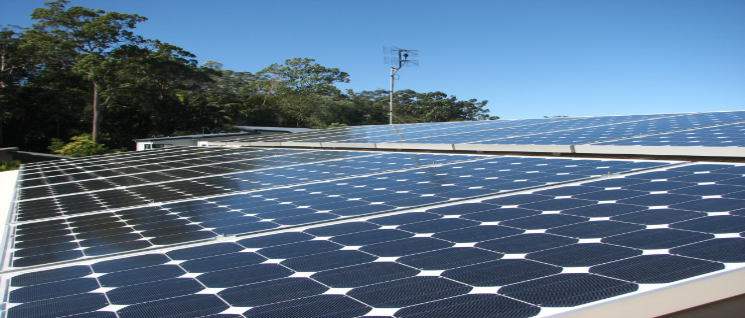
Solar Mounting Systems PART 1 – General Information
A solar mounting system is the base of your solar installation. Much like building a house on a good strong foundation, it is also very important to have a good strong foundation on which to mount your solar panels. By choosing a good quality mounting system you are ensuring your system will last the test of time and ensure a good return on investment.
With so many different mounting systems on the market today it is important to ask some questions.
• What materials are used in the manufacture of the mounting system and is it rust free?
Living on the coast presents a few conditions that cause rust and corrosion to occur. It is imperative that your mounting system will last and not weaken over time; after all it is the base of your solar investment
• Is the mounting system approved for installation in your wind region?
Location determines the wind region. In QLD, anywhere within 100kM of the coast line experiences high wind loads. Some mounting systems are not manufactured to withstand these wind regions and some do not have cyclone ratings.
• Are there structural certificates available for the customer to view proving Australian certification and wind region approval?
Any good mounting system should have the relevant certificates available showing their approval for installation in Australia and in your wind region.
• What type of mounting system is required? Flush Mount, Tilted or ground mount?
Some roofs will require the system to be tilted to optimise performance. In Australia, North, west or East facing systems are common. East and West are more common now days due to the feed-in tariffs being so low. In some cases the system will have to be pole or ground mounted. The principle of choosing a good quality mounting system still applies here.
• How high is the building or structure that the mounting system is to be fixed to?
Some racking systems are only approved to be installed on domestic houses no higher than 2 or 3 stories high. When mounting on high rise apartments or office blocks a different set of rules apply. The mounting system has to be installed in such a way that it can handle the extra stresses that are exerted to it in these areas. Again, certification and installation guidelines should be available from the manufacturer of the mounting system to show that it is engineered to withstand these conditions.
Be sure to ask these important questions before you have solar panels installed because the Mounting system is what actually holds the solar panels down and the last thing you want is your installer using a cheap product that may and probably will fail in the future causing damage and a lot of heartache!!!
Part 2 of this article will focus on ‘flush mounting systems.’
